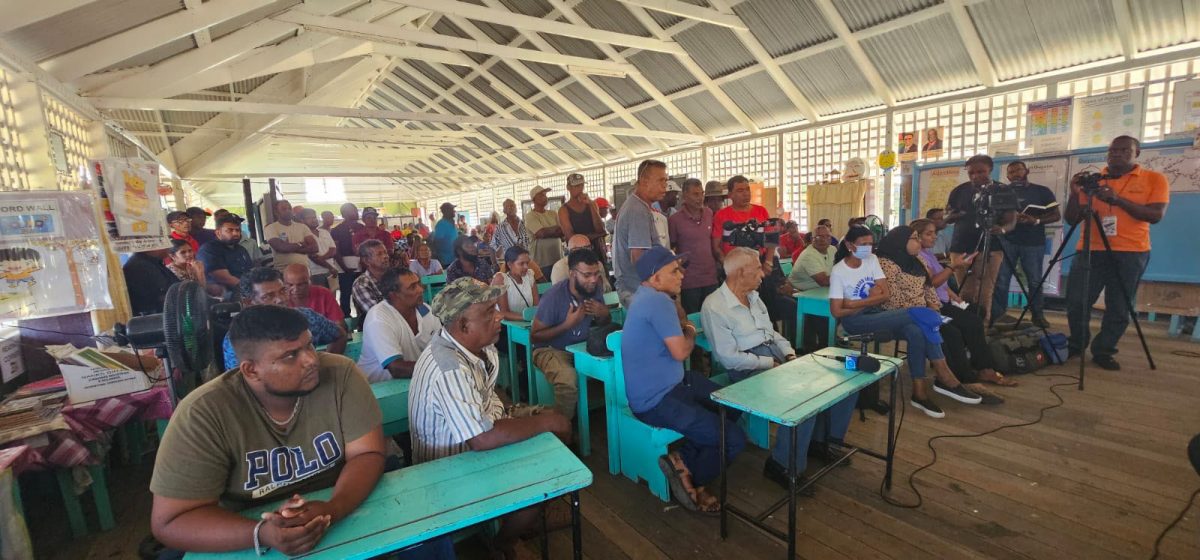The Ministry of Agriculture yesterday confirmed that aerial spraying will commence this week to combat the ongoing paddy bug situation in Region Six. So far, it said, there has been 11% damage reported at rice mills as opposed to the 20% being claimed by farmers.
Stabroek News reported yesterday that rice farmers on the Corentyne were reeling from the paddy bug infestation which has caused an average of 20% losses throughout the region leaving many farmers unsure of how they will return to the fields next crop. Farmers had said that this was one of the largest infestations seen since the 90s.
However, an updated report provided by Minister of Agriculture Zulfikar Mustapha yesterday said that “current average damage at the mills showed 11%. This has decreased from 17% in the earlier stage of the crop. Reports from the mill showed that farmers are having damage as low as 0.1%.”
According to the report, at the early stage of the crop, monitoring by extension officers showed that the paddy bug levels were below the threshold. However as the crop progressed, it was observed that the level was increasing resulting in the ministry initiating a collaboration of monitoring and demonstrations with extension officers of Guyana Rice Development Board (GRDB) and the National Agricultural Research and Extension Institute.
The report said that the monitoring commenced on 17th February 2024 with 16 extension officers and is being continued to date. “During the course of the monitoring and demonstrations, the farmers were informed of the paddy bug level in their fields and advised to spray fields for control. The reports on the monitoring indicating the paddy bug level is provided on a daily basis to all stakeholders in the region via a WhatsApp group. The fields with high paddy bug levels are followed up with monitoring so as to ensure that the farmers had effective control. Extension officers continue to provide public awareness through the distribution of flyers, WhatsApp messages, Facebook and outreaches with the paddy bug advisory for managing the infestation,” it detailed.
According to the report, to date, a total of 2,221 fields were monitored by the extension officers. “As the monitoring reports from earlier … had indicated, the paddy bugs were above the threshold level (300 paddy bugs per 50 sweeps); the reports currently show that the paddy bug levels have been decreasing (60 bugs in 50 sweeps). This is because of the actions taken by the GRDB and farmers to control the paddy levels in their fields,” the report said.
Meanwhile, the report said that interventions have been made by the GRDB for aerial spraying of paddy bugs in Region Six.
Last Friday, it noted, aerial spraying was done on 200 acres by a farmer from Bengal. “There is provision made for a Suriname aircraft to operate in the region to spray the farmers’ fields for the paddy bugs,” it added.
The report disclosed that a meeting was held on Saturday between the farmers and the aircraft operators from Suriname to work out the programme for spraying. “The GRDB is compiling a list of the acreage of the farmers who will utilise the aircraft spraying service. The aerial spraying is expected to start on Wednesday,” the report revealed.
Heading the monitoring team in the region, farmer, Lekha Rambrich had told Stabroek News that usually, the paddy bugs would migrate to the front of the cultivation but instead, now they are migrating backward. He had explained that the monitoring in Black Bush Polder and Nos 52/74 Backlands has resulted in them noticing the paddy bugs migrating backward to the savannah which he said is a new pattern.






